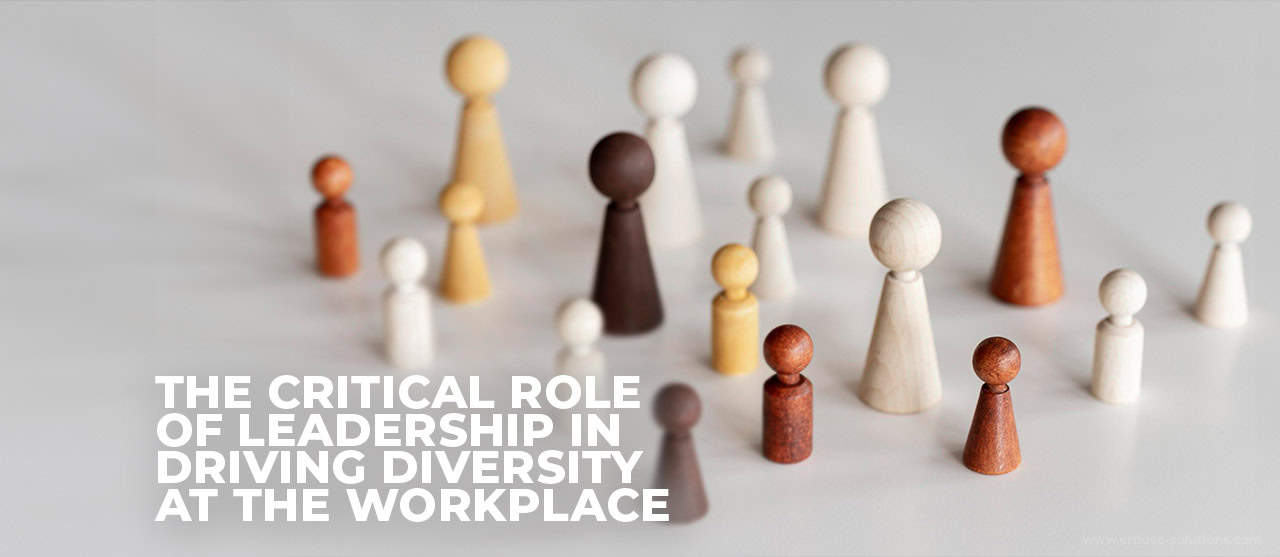
For organizations actively striving to retain competitiveness and foster innovation, a diverse and inclusive workplace environment is critical. However, the responsibility of realizing workplace diversity does not solely lie with HR departments or diversity committees. Instead, it necessitates collaborative effort and active support from leaders across all organizational levels.
The actions of leaders can significantly impact the environment that employees experience daily. They can influence how employees interact with one another, change the climate of an organization, and ultimately influence retention, engagement, and performance.
In essence, to achieve workplace diversity and increase inclusion, leaders must actively practice inclusion in their everyday actions & decisions.
Understanding Diversity In The Workplace
Before examining the role of leadership, it’s essential to grasp the concept of “workplace diversity” exhaustively. Workplace diversity encompasses accommodating various socioeconomic dimensions, including age, gender, race, ethnicity, sexual orientation, disability, and economic background. By embracing the differences, organizations can encourage a broader range of perspectives, creativity, and skills.
As Per The Pew Research Center:
- 56% of the workers say that focusing on diversity, equity, and inclusion (DEI) initiatives is a good thing. Only about 16% say that it’s a bad thing.
- About 29% of the workers also confirm that it’s important to them that the place they work at is accessible for people with disabilities.
These stats illustrate the existing landscape within organizations – highlighting both the areas of progress and the continued need for further diversification.
The Role Of Leadership In Driving Diversity
Leadership is the linchpin in the pursuit of workplace diversity, as effective leaders can inspire and guide their teams toward fostering diversity and creating an inclusive workplace culture. Let’s explore the key aspects of leadership’s role in driving diversity:
1. Setting The Tone From The Top
Leaders must begin by setting a clear and unequivocal tone from the top. They should communicate their commitment to diversity and inclusion through words and actions. This commitment should also be embedded in the organization’s mission, vision, and values.
When leaders prioritize diversity as a strategic goal, it signals to the entire organization that diversity is not just a buzzword but a fundamental aspect of the company’s identity.
In essence, the power of leadership messaging cannot be overstated. Their messages serve as guiding principles that dictate how the organization functions. In a time when diversity and inclusion are considered default components of a workplace, leaders who address DEI expectations directly become more relatable and trustworthy figures.
2. Setting The Example
The best leaders are those who lead by example. They set high standards for their performance and always strive for excellence in everything they do. In this way, they set a benchmark for employees to follow. In fact, other leaders can emulate their role models’ successes.
When leaders set high standards for themselves, it has a ripple effect throughout the organization. Employees look to their leaders as models of behavior, and they are more likely to adopt those standards as their own. This emulation of leadership behavior creates a culture of excellence where everyone is committed to delivering their best.
How Does This Tie Into The Diversity Narrative?
Well, leaders who actively engage with employees from diverse backgrounds, listen to their perspectives, and champion inclusivity reflect upon the critical of diversity — encouraging all employees to embrace it and foster an environment where everyone feels valued and empowered to contribute their unique perspectives & skills.
3. Creating A Culture Of Inclusion
Cultivating a culture of inclusion is the responsibility of the whole workforce. As such, it requires everyone — from senior executives to front-line workers — to take ownership of the initiative.
Leaders can set an example by fostering a culture of inclusion by modeling it in their personal lives. Here are some ways leaders can help foster a culture of inclusion:
- Encourage Employee Resource Groups (ERGs)
ERGs are employee-led groups that provide support and networking opportunities for employees. ERGs can be a great way to create a sense of belonging for employees who may feel marginalized in the workplace.
- Get Feedback From Your Employees
Ask them how you can create a more inclusive workplace. This can be carried out via surveys, focus groups, or one-on-one conversations.
- Hold People Accountable
If someone does something discriminatory or offensive, address it immediately.
Fostering Diversity In Hiring & Promotion
A study revealed that even when women hold the same characteristics as men, they are 30% less likely to be called for a job interview – this stark gender bias highlights the challenges women face in gaining equal access to employment opportunities.
In fact, there is a significant gender imbalance in managerial positions. Only 87 women and 82 women of color are promoted for every 100 men promoted to a managerial position. As a result, men significantly outnumber women in these critical leadership roles.
To truly embrace diversity and inclusion, leaders must take deliberate actions to address disparities and biases in these areas. To that end, one key leadership responsibility in driving diversity in the workplace is fostering it in hiring and promotional processes. This aspect is particularly critical, as it shapes the composition of an organization’s workforce.
Addressing Unconscious Bias
Unconscious biases are deeply rooted in our brains as a result of societal influences, experiences, and cultural conditioning. They can manifest in various forms, including gender bias, religion bias, age bias, and more. These biases can lead to unfair treatment, unequal opportunities, and exclusion for certain individuals or groups.
Addressing unconscious bias is a journey that requires commitment and effort from leaders across organizational levels. How can they go about it?
- By acknowledging the existence of bias
- Participating in training
- Promoting inclusive decision-making
- Implementing measures to measure progress
This way, leaders can create a workplace where individuals are judged based on their abilities, skills, and contributions rather than their demographics.
The Bottom Line
In today’s globalized and interconnected world, workplace diversity is not just a moral imperative; it’s a strategic necessity. Leaders hold the key to unlocking the complete potential of diversity in the workplace.
At EnFuse, we understand the importance of leadership in driving DEI initiatives. Hence, we’re committed to fostering a diverse and inclusive workplace where employees from all backgrounds can contribute their unique perspectives and talents. Learn more about us here and join us in our journey toward a more diverse future.

















Comment